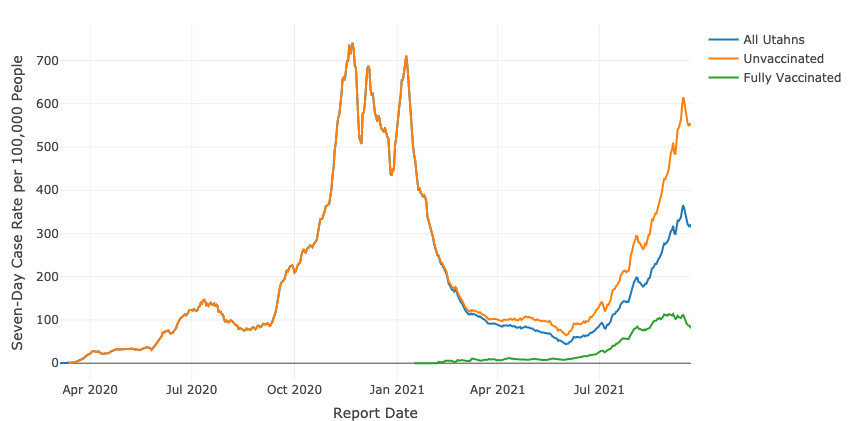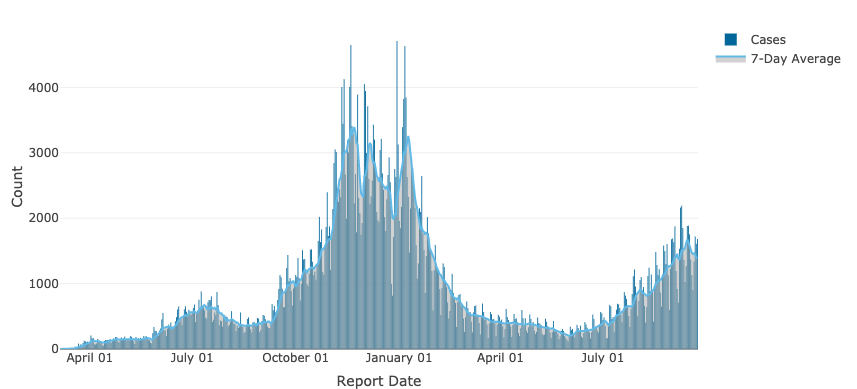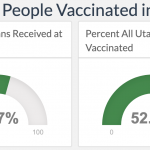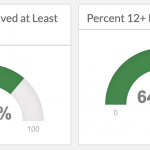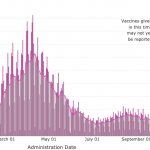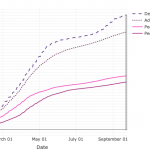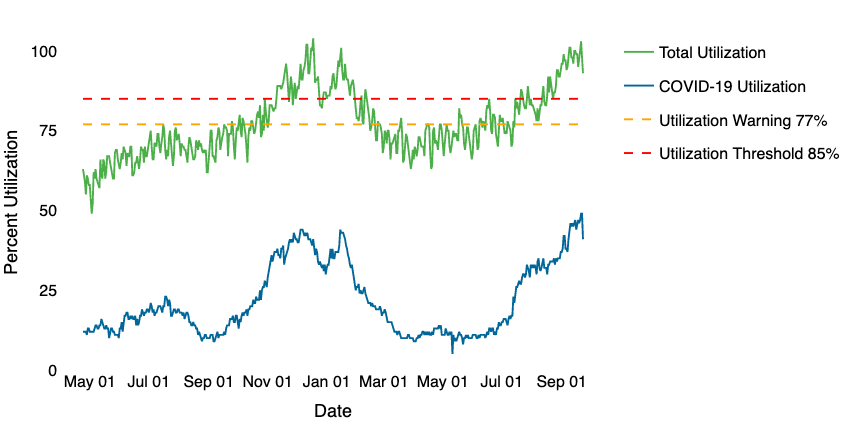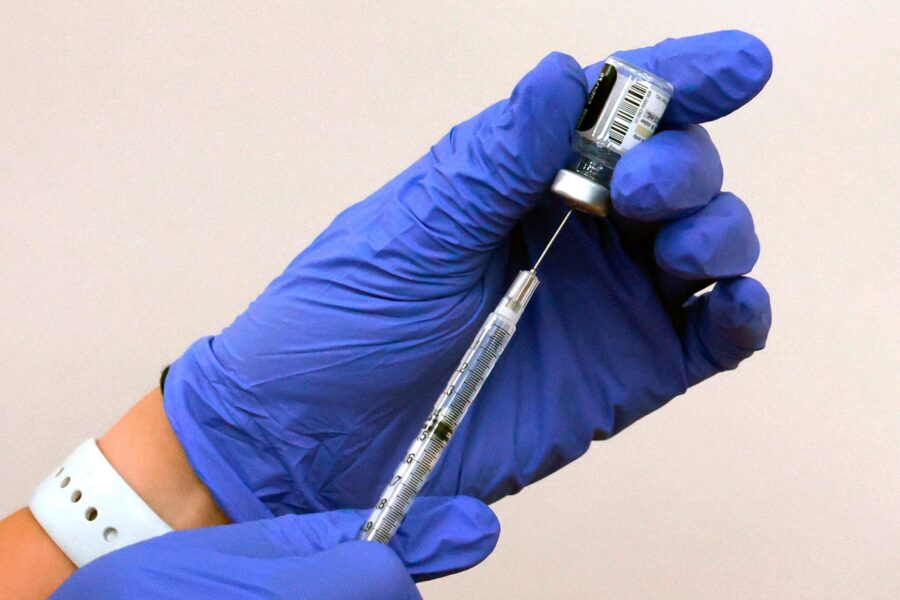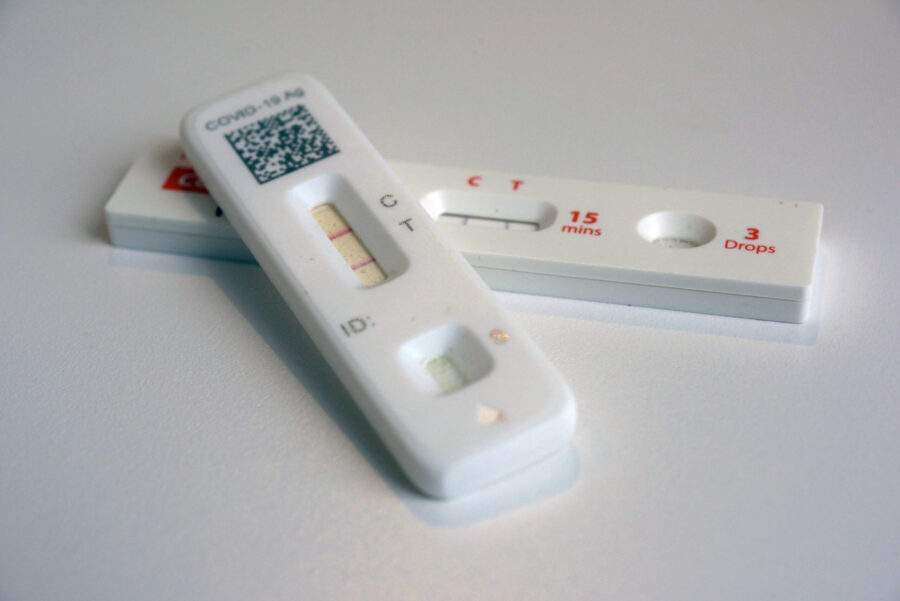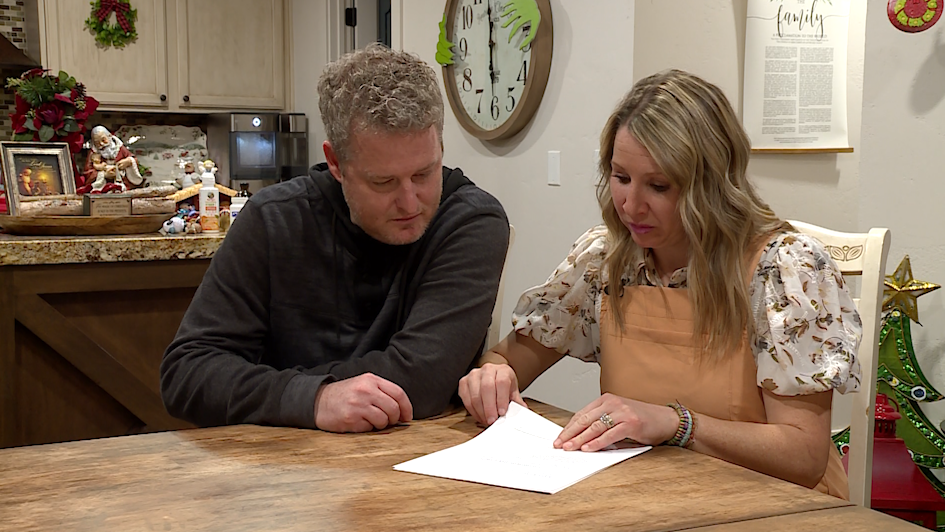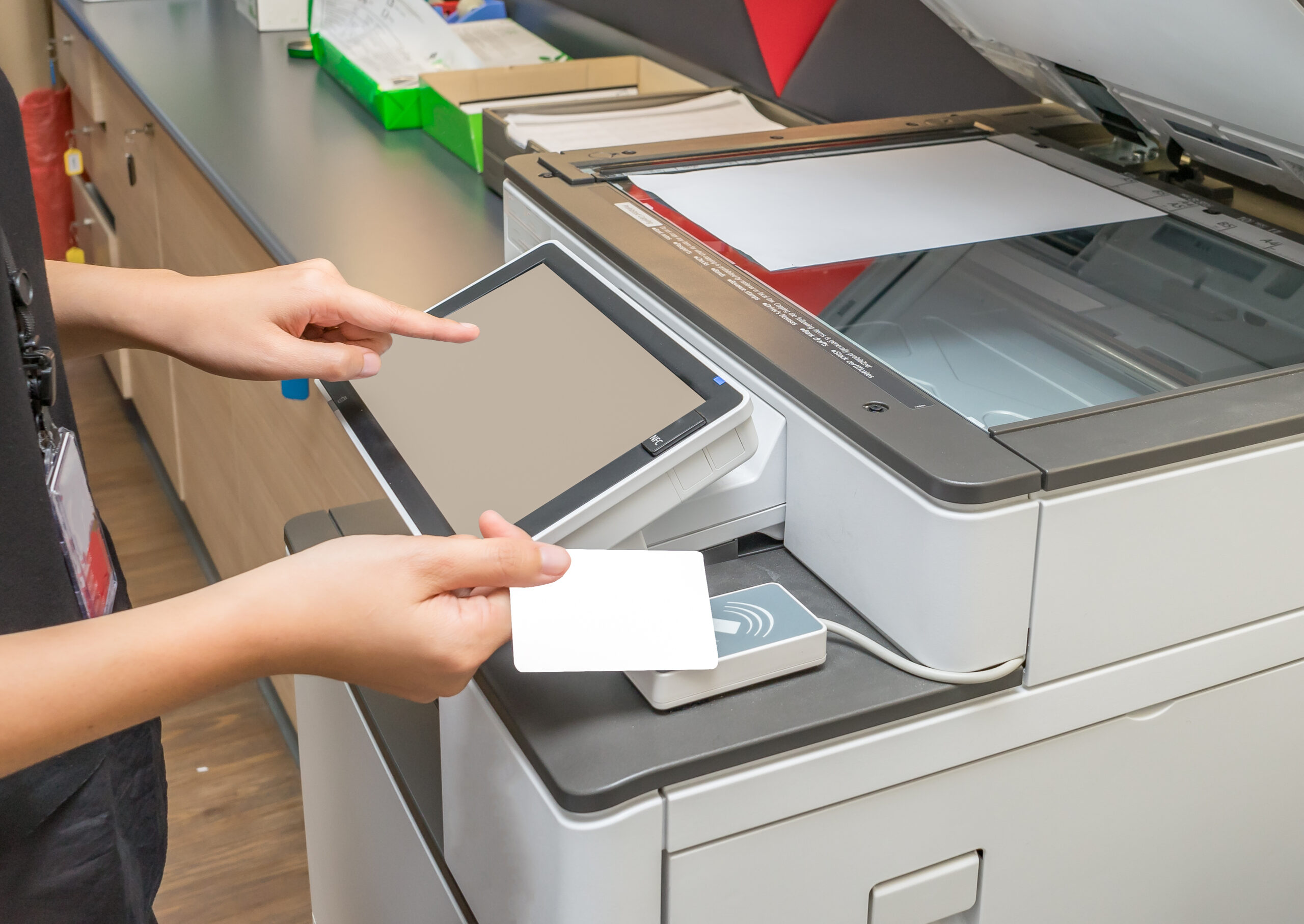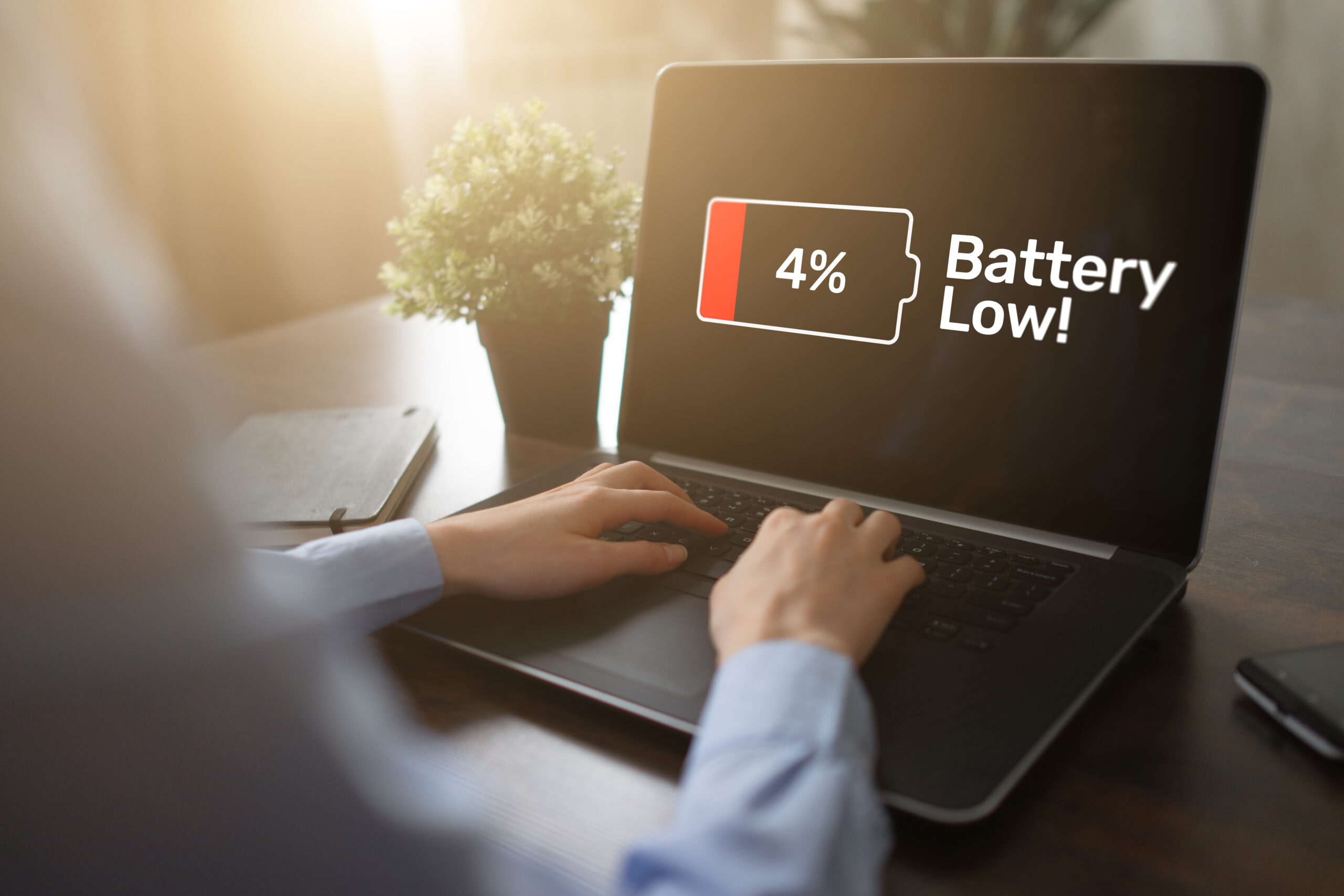Utah reports 3,176 COVID cases, 23 additional deaths over the weekend
Sep 27, 2021, 1:39 PM | Updated: 1:58 pm
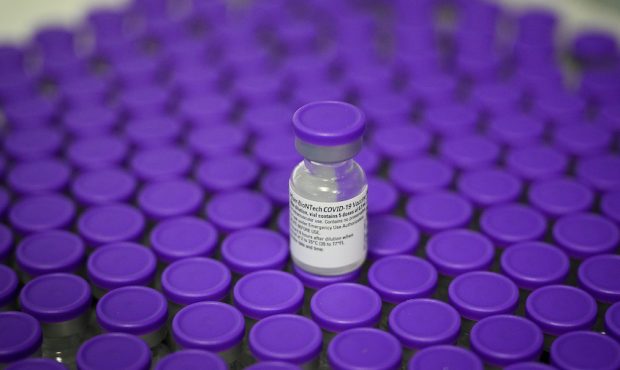
FILE PHOTO (Photo by Leon Neal/Getty Images)
(Photo by Leon Neal/Getty Images)
SALT LAKE CITY — The Utah Department of Health on Monday said 23 more Utahns died due to COVID-19 and 3,176 residents tested positive for the virus over the weekend.
UDOH broke down that case count into the following:
- 9/24: 1,359 cases
- 9/25: 1,030 cases
- 9/26: 796 cases
- Nine cases were removed through data quality analysis
Of those cases, 640 (20.15%) were school-aged children — 304 cases in children ages 5-10, 149 cases in children ages 11-13 and 187 cases in children ages 14-18.
Currently, 586 Utahns are hospitalized due to the virus and the ICUs at Utah’s 16 referral center hospitals, where the majority of COVID-19 patients are treated, are 92.8% full — well above the state’s “functionally full” threshold of 85%.
No one's taken the brunt of the pandemic like health care workers, and the unrelenting cases of COVID-19 have brought many to their breaking point. #KSLTV #YourLifeYourHealth with @Intermountainhttps://t.co/9bRtCHhNoh
— KSL 5 TV (@KSL5TV) September 9, 2021
The rolling seven-day average for positive tests was 1,359 — down from 1,390 on Friday and 1,456 last Monday.
An additional 13,885 vaccine doses have been administered since Friday, bringing the state’s total to 3,430,386.
UDOH said over 1.67 million Utahns are now fully vaccinated and over 1.88 million have received at least one dose of a vaccine.
The U.S. Food and Drug Administration has also fully approved Pfizer’s COVID-19 vaccine.
“The vaccine has been proven to be safe and highly effective since it first became available under emergency use last December. Full FDA approval is the final step in a rigorous approval process to confirm the vaccine’s safety and effectiveness,” UDOH officials said. “The FDA’s announcement should provide confidence to anyone who may have hesitated to get the vaccine while it was under emergency use. We strongly encourage you to get vaccinated and help end the pandemic. We also strongly encourage healthcare providers who haven’t offered COVID-19 vaccines at their practice before now, to take the necessary steps to enroll as vaccine providers as soon as possible.”
Vaccinated vs. unvaccinated risk ratios
UDOH has added data on risk ratios among the vaccinated and the unvaccinated for testing positive, becoming hospitalized and dying from COVID-19 to the public data dashboard.
That data can be found by clicking on the “Risk Factors” tab at coronavirus.utah.gov.
In the last 28 days, people who are unvaccinated are at 5.5 times greater risk of dying from COVID-19, 7.8 times greater risk of being hospitalized due to COVID-19, and 6.6 times greater risk of testing positive for COVID-19 than vaccinated people.
Since June 1, the number of patients who are currently hospitalized for COVID-19 in Utah has increased by 312% and the number of patients currently being treated for COVID-19 in ICUs has increased by 320%. pic.twitter.com/ntHfnIbSb4
— State of Utah COVID-19 Response (@UtahCoronavirus) September 27, 2021
Since Feb. 1, people who are unvaccinated are at 4.1 times greater risk of dying from COVID-19, 5.0 times greater risk of being hospitalized due to COVID-19, and 4.2 times greater risk of testing positive for COVID-19 than vaccinated people.
Of the 1,632,224 Utahns who are 14 days past their fully vaccinated date, 16,874 (1.0338%) have tested positive for COVID-19, 865 have been hospitalized (0.053%) and 113 have died (0.00692%).
Utah has reported 503,874 positive COVID-19 cases, 21,911 hospitalizations and 2,892 deaths in total since the pandemic started.
“The UDOH determines vaccine status for cases using two methods — by linking all known cases to vaccination records reported into the Utah Statewide Immunization Information System (USIIIS) and through self-report by asking all cases if they have been fully vaccinated,” UDOH officials said. “Breakthrough cases may be overrepresented in the data due to this self-reporting.”
Testing
UDOH reports 3,425,516 people have been tested — 20,927 more than Friday. Of those, 503,874 Utahns have tested positive for COVID-19 — an increase of 3,176 new cases.
The rolling seven-day average for positive tests was 1,359 — down from 1,390 on Friday and down from 1,456 last Monday.
On June 1, Utah’s rolling seven-day average was 200 cases.
The rolling seven-day average for percent positivity of “people over people” rose slightly to 13.8% while the rolling seven-day average for percent positivity of “tests over tests” dropped slightly to 9.8%.
Vaccinations
The state has administered 3,430,386 vaccine doses in total, which is an increase of 13,885 over Friday’s numbers.
As of Monday, over 1.88 million Utahns had received at least one dose of a vaccine and over 1.67 million Utahns had been fully vaccinated.
Over 4.02 million vaccines have been delivered to Utah.
Hospitalizations
Currently, 586 people are hospitalized with confirmed cases of COVID-19 — Utah’s highest total since mid-January — and 212 of those people are in intensive care units.
Utah’s ICUs were 90.8% full and the ICU beds in Utah’s referral centers were 92.5% full Monday — well above the state’s utilization threshold or “functionally full” mark of 85%.
“At about 69% overall ICU utilization, ICUs in Utah’s major hospitals with the ability to provide best care for COVID-19 patients begin to reach staffing capacity,” UDOH officials said. “Seventy-two percent use among all hospitals and 77% in referral center hospitals creates major strains on the health care system. When 85% capacity is reached, Utah will be functionally out of staffed ICU beds, indicating an overwhelmed hospital system.”
Deaths
As of Monday, the virus had killed 2,892 of the state’s residents. The following deaths were reported Monday:
- Male, between 65-84, Utah County resident, long-term care facility resident
- Male, older than 85, Salt Lake County resident, not hospitalized
- Male, between 65-84, Washington County resident, hospitalized at time of death
- Female, between 65-84, Salt Lake County resident, hospitalized at time of death
- Female, between 45-64, Emery County resident, hospitalized at time of death
- Female, between 45-64, Box Elder County resident, hospitalized at time of death
- Male, older than 85, Salt Lake County resident, long-term care facility resident
- Male, between 65-84, Salt Lake County resident, hospitalized at time of death
- Male, between 25-44, Salt Lake County resident, hospitalized at time of death
- Male, between 65-84, Salt Lake County resident, hospitalized at time of death
- Male, older than 85, Uintah County resident, hospitalized at time of death
- Male, between 65-84, Salt Lake County resident, hospitalized at time of death
- Male, between 45-64, Utah County resident, hospitalized at time of death
- Female, between 65-84, Tooele County resident, hospitalized at time of death
- Male, between 65-84, Uintah County resident, hospitalized at time of death
- Female, between 65-84, Sanpete County resident, hospitalized at time of death
- Male, older than 85, Salt Lake County resident, hospitalized at time of death
- Male, between 65-84, Utah County resident, hospitalized at time of death
- Female, between 65-84, Salt Lake County resident, not hospitalized
- Female, between 65-84, Utah County resident, hospitalized at time of death
- Female, between 65-84, Salt Lake County resident, hospitalized at time of death
- Male, between 65-84, Utah County resident, hospitalized at time of death
- Female, between 65-84, Weber County resident, hospitalized at time of death
Nationwide Numbers
Coronavirus Resources
Have you or a family member been affected by coronavirus issues in Utah? KSL wants to hear from you. Contact KSL by emailing social@ksl.com.
Click here to sign up for a vaccine and here to see how Utah’s vaccine rollout is progressing.
The latest COVID-19 stories from KSL can be found here.
How do I prevent it?
The CDC has some simple recommendations, most of which are the same for preventing other respiratory illnesses or the flu:
- Get vaccinated
- Avoid close contact with people who may be sick
- Avoid touching your face
- Stay home when you are sick
- Cover your cough or sneeze with a tissue and then throw the tissue in the trash
- Wash your hands often with soap and water for at least 20 seconds, especially after going to the bathroom, before eating, and after blowing your nose, coughing or sneezing. Always wash your hands with soap and water if your hands are visibly dirty.
- If soap and water are not readily available, use an alcohol-based hand sanitizer with at least 60% alcohol.
The CDC recommends unvaccinated Americans should continue wearing cloth face coverings in public settings where other social distancing measures are difficult to maintain (e.g., grocery stores and pharmacies).

